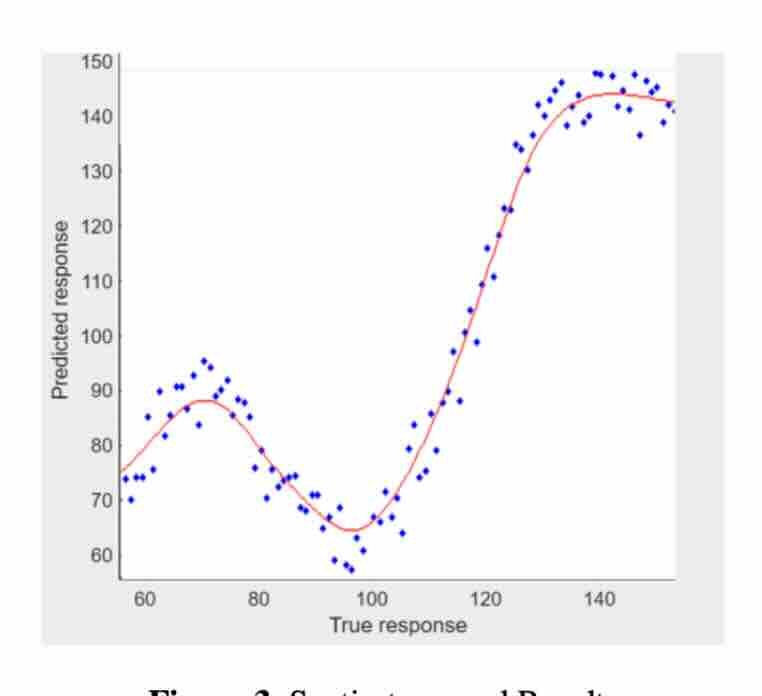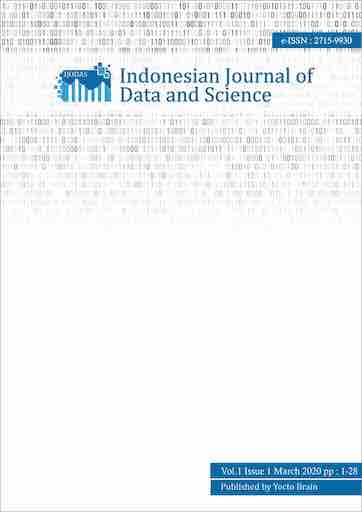Comparison of Three Resouces Allocation Technique in Cloud Computing
DOI:
https://doi.org/10.56705/ijodas.v5i1.118Keywords:
Resource Allocation, Traffic Prediction, Cloud ComputingAbstract
The shift to the cloud enables organizations of all sizes to swiftly, efficiently, and innovatively move their operations. The adoption of cloud computing has significantly transformed most organizations' work, communication, and collaboration methods, making it a crucial necessity for maintaining competitiveness in the digital age. Organizations are implementing cloud bursting to handle IT demand peaks by utilizing private cloud capacity and public cloud capacity, freeing up local resources for critical applications, and reverting data back to the private cloud. Organizations face challenges in allocating resources in cloud computing to automatically switch from private cloud to public cloud, leading to system issues, user frustration, operational failure, increased stress, and revenue loss. To address these concerns. This paper investigates traffic predictions by comparing three prediction tools, such as support vector machines, spatio-temporal, and edge-cloud collaborative schemes, and proposing conceptual solutions. Efficient cloud computing traffic management can prevent system bottlenecks, especially during peak periods, potentially leading to dissatisfied clients.
Downloads
References
P. K. Singh, S. W. Chan." The Impact of Electronic Procurement Adoption on Green Procurement towards Sustainable Supply Chain Performance-Evidence from Malaysian ISO Organizations", Journal of Open Innovation: Technology, Market, and Complexity, vol, no.61, 2022. doi: 10.3390/joitmc8020061.
T. Mahmood, U. Rehman," Providing decision-making approaches for the assessment and selection of cloud computing using bipolar complex fuzzy Einstein power aggregation operators",journal of Engineering Applications of Artificial Intelligence,vol,no.129,2024. doi: 10.1016/j.engappai.2023.107650.
Q. Zhou,"Smart library architecture based on internet of things (IoT) and software defined networking (SDN)", Journal of Heliyon vol, no.129, 2024. doi: 10.1016/j.heliyon.2024.e25375
D. Knos, K. Karagiorgos, J. Haas, B. Blumenthal, L. Nyberg, S. Halldin, "Cloudburst-disaster modelling. A new open-source catastrophe model", International Journal of Disaster Risk Reduction, vol, no.67, 2022. doi: 10.1016/j.ijdrr.2021.102679.
Y. Zhang, H. Li, S. Liu, P. Huang, "Hybrid Block Storage for Efficient Cloud Volume Service", ACM Transactions on Storage (TOS), Volume 19, Issue 4.Article vol. No.: 35, pp 1–25. doi: 10.1145/3596446.
M. Zheng, R. Huang, X. Wang, X. Li, "Do firms adopting cloud computing technology exhibit higher future performance? A textual analysis approach", International Review of Financial Analysis, vol, no.90, 2023, doi: 10.1016/j.irfa.2023.102866.
A. Belgacem, S. Mahmoudi, M. Kihl,"Intelligent multi-agent reinforcement learning model for resources allocation in cloud computing",Journal of King Saud University –Computer and Information Sciences vol, no.34, 2022, doi: 10.1016/j.jksuci.2022.03.016
B. C. Schneider et al., "Efficacy and moderators of metacognitive training for depression in older adults (MCT-Silver): A randomized controlled trial", Journal of Affective Disorders, Vol, no.345, 2024, doi: 10.1016/j.jad.2023.10.118.
Y. Song, "Public cloud network intrusion and internet legal supervision based on abnormal feature detection", Journal of Computers and Electrical Engineering. Vol, no.112, 2023, doi: 10.1016/j.compeleceng.2023.109015.
J. Zhang, J. D. Peter, A. Shankar, W. Viriyasitavat, "Public cloud networks oriented deep neural networks for effective intrusion detection in online music education", Journal of Computers and Electrical Engineering, vol, no.115, 2024, doi: 10.1016/j.compeleceng.2024.109095
W. Lu, "Application cost of intelligent intrusion detection in medical logistics management under public cloud environment", Journal of Computers and Electrical Engineering, vol, no.112, 2023, doi: 10.1016/j.compeleceng.2023.109014.
F. Ullah, S. Dhingra, X. Xia, M. A. Babar, "Evaluation of distributed data processing frameworks in hybrid clouds", Journal of Network and Computer Applicationsvol, no.224, 2024, doi: 10.1016/j.jnca.2024.103837.
S. Pham et al, Evaluation of Shared Resource Allocation Using SAND for ABR Streaming,ACM Transactions on Multimedia Computing, Communications, and Applications (TOMM), Volume 16, Issue 2s,Vol.70,2020, doi: 10.1145/3388926.
W.Choi, B.Urgaonkar, M.T.Kandemir, G.Kesidis,"Multi-resource fair allocation for consolidated flash-based caching systems", Middleware '22: Proceedings of the 23rd ACM/IFIP International Middleware Conference November, Vol.16, 2022, doi: 10.1145/3528535.3565245.
J.Cleland-Huang et al,"Extending MAPE-K to support human-machine teaming"SEAMS '22: Proceedings of the 17th Symposium on Software Engineering for Adaptive and Self-Managing Systems,Vol.131,2022, doi: 10.1145/3524844.3528054.

Downloads
Published
Issue
Section
License
Authors retain copyright and full publishing rights to their articles. Upon acceptance, authors grant Indonesian Journal of Data and Science a non-exclusive license to publish the work and to identify itself as the original publisher.
Self-archiving. Authors may deposit the submitted version, accepted manuscript, and version of record in institutional or subject repositories, with citation to the published article and a link to the version of record on the journal website.
Commercial permissions. Uses intended for commercial advantage or monetary compensation are not permitted under CC BY-NC 4.0. For permissions, contact the editorial office at ijodas.journal@gmail.com.
Legacy notice. Some earlier PDFs may display “Copyright © [Journal Name]” or only a CC BY-NC logo without the full license text. To ensure clarity, the authors maintain copyright, and all articles are distributed under CC BY-NC 4.0. Where any discrepancy exists, this policy and the article landing-page license statement prevail.














